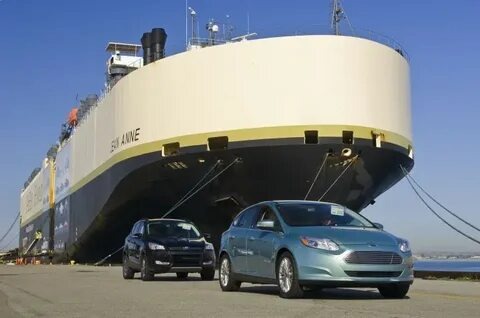The world is more connected than ever, and sometimes your vehicle needs to travel with you. International car shipping represents the complex process of moving vehicles across borders and oceans – a service crucial for expatriates, military personnel, collectors, and global adventurers. While the process may seem daunting, understanding how international car shipping works transforms what could be a logistical nightmare into a manageable, well-planned journey.
Why Choose International Car Shipping?
People select international car shipping for diverse reasons that typically combine practical necessity with financial wisdom:
-
Overseas Relocations: Moving abroad for work or family? Bringing your familiar vehicle provides immediate comfort and convenience in a new environment
-
Military Assignments: Service members deployed internationally often need to transport personal vehicles to their new duty stations
-
Collector Vehicle Transport: Enthusiasts frequently buy, sell, and transport classic and luxury vehicles across global markets
-
Extended Stays Abroad: Students and retirees living overseas for extended periods may find shipping their current vehicle more economical than purchasing abroad
-
Corporate Transfers: Employees on international assignments may have vehicle relocation included in their relocation package
Understanding Your Shipping Options: Methods and Considerations
Choosing the right shipping method represents your most crucial decision in the international car shipping process. The two primary methods each serve different needs:
Roll-On/Roll-Off (Ro-Ro) Shipping
This method involves driving your vehicle directly onto a specialized vessel where it’s secured for ocean transit, then driven off at the destination port.
-
Ideal For: Standard, operational vehicles in good condition
-
Advantages: Typically more economical and straightforward for running vehicles
-
Considerations: Vehicles are exposed to sea conditions during transit with no personal items permitted inside
Container Shipping
Your vehicle is loaded into a standard shipping container, either alone or consolidated with other cargo.
-
Ideal For: High-value, classic, non-operational, or modified vehicles
-
Advantages: Maximum protection from elements and handling; containers can be locked for security
-
Considerations: Higher cost with more complex loading requirements
The International Car Shipping Process: A Step-by-Step Journey
Understanding the complete process helps manage expectations and ensures proper preparation:
-
Research and Quotation: Determine origin and destination ports while gathering initial quotes based on your vehicle and route
-
Documentation Preparation: Compile essential paperwork including original vehicle title, passport copies, and necessary insurance documents
-
Vehicle Preparation: Professionally clean interior and exterior, remove personal belongings, and ensure fuel levels are at approximately 1/4 tank
-
Customs Compliance: Research and comply with destination country regulations regarding vehicle age, emissions, and safety standards
-
Port Procedures: Deliver your vehicle to the origin port for loading and documentation
-
Ocean Transit: Your vehicle travels via selected shipping method while you track its progress
-
Destination Clearance: Navigate customs clearance and any required modifications at the destination country
-
Final Delivery: Receive your vehicle at the destination port or arranged delivery location
Critical Factors for Successful International Car Shipping
Several key considerations significantly impact your international car shipping experience:
-
Destination Country Regulations: Research import laws thoroughly – some countries prohibit vehicles over specific ages or with certain modifications
-
Insurance Coverage: Standard auto policies rarely cover international ocean transit – secure specialized marine insurance
-
Realistic Timelines: Account for sailing times, port delays, and customs processing – the complete process typically takes 4-12 weeks
-
Vehicle Modifications: Some countries require specific modifications to meet local safety or emissions standards
-
Taxes and Duties: Understand potential import taxes, duties, and registration fees in your destination country
5 Essential Tips for Smooth International Car Shipping
-
Start Early: Begin research and planning at least 2-3 months before your target shipping date
-
Verify Regulations: Double-check import requirements with the destination country’s customs authority
-
Document Thoroughly: Create comprehensive photographic and video documentation of your vehicle’s condition before shipping
-
Understand Costs: Request detailed quotes that outline all potential charges including port fees and customs duties
-
Maintain Communication: Ensure you have reliable contact information for all parties involved in the shipping process
Common Challenges and Solutions in International Car Shipping
Even with careful planning, challenges can arise during international car shipping:
-
Customs Delays: Solution – Ensure all documentation is complete and accurate before submission
-
Regulatory Surprises: Solution – Work with professionals who understand destination country requirements
-
Weather Delays: Solution – Build flexibility into your timeline and expectations
-
Damage Concerns: Solution – Choose appropriate shipping method and maintain thorough documentation
Conclusion: Navigating Global Vehicle Transport with Confidence
Embarking on international car shipping requires meticulous preparation and understanding of complex logistics. By breaking down the process, comprehending the available methods, and prioritizing documentation and research, you can navigate this intricate journey successfully. The key to successful international car shipping lies in planning ahead, asking informed questions, and maintaining realistic expectations throughout the process.
FAQs: International Car Shipping Questions Answered
Q1: What’s the most important thing to know before shipping my car internationally?
A: Research your destination country’s import regulations thoroughly. This represents the most critical factor, as non-compliance can result in refusal of entry or mandatory vehicle destruction.
Q2: How long does the entire international shipping process typically take?
A: From initial preparation to final delivery, expect the process to take 4 to 12 weeks. Ocean transit alone typically requires 2-6 weeks, with additional time needed for customs clearance at both ends.
Q3: Can I pack personal belongings in my vehicle during international shipping?
A: Generally, no. For Ro-Ro shipping, personal items are strictly prohibited. Container shipping may allow limited personal effects but subject to strict customs regulations and declaration requirements.
Q4: What are the main differences between Ro-Ro and container shipping?
A: Ro-Ro involves driving your vehicle onto a specialized ship, while container shipping places your vehicle inside a sealed container. Ro-Ro is typically more economical for operational vehicles, while containers offer superior protection and security.
Q5: Are there vehicles that cannot be shipped internationally?
A: Yes. Common restrictions include vehicles over specific age limits (varying by country), those with salvage titles, models that don’t meet destination emission standards, and vehicles with outstanding liens.





